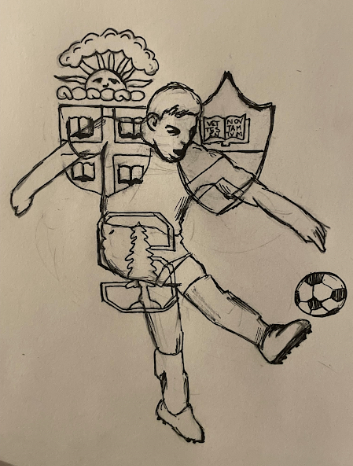Many high school athletes wonder if they will continue with athletics at the collegiate level. With the commitment and time required to completely master a sport, many high school athletes are content to just play for fun. But if one has a goal for the collegiate level and is invited to play on a team, this will likely provide an athlete with a completely different feel for and understanding of the sport. At the college level, there will be continued challenges when juggling school work and practice, along with limited free time and time for travel. However, with training and a strong work ethic, college athletes can succeed.
A significant difference between high school and college sports is the daily schedule. In high school, an average week of classes is roughly 30 hours; while in college, students may have only 12 hours a week of class with many hours to rest in between. This enables college teams to have more practices throughout the day, which can create less time for studying/homework. Some high school sports may only have practice after school; whereas, college sports may have practice up to four hours a day, according to NCAA Bylaw 17.1.6.1. (ncaa.org). Bryant University Division-I lacrosse player and LHS Class of 2023 alumna Kaelynn O’Brien said, “The NCAA sets a limit of 20 hours per week for Division-I lacrosse, so we went from Monday-Saturday with that schedule. Compared to high school, just having practice usually for an hour and a half was so much different than my days now with lift, conditionings, and practice that could sometimes take up to three or four hours.”
As a result of such long hours, the work-life balance may be much more challenging at the higher levels. While high school may already be a struggle for some to have harmony between athletics and school, in college, this is amplified. College-level work alone can prove to be a challenge for many without adding athletics. But many athletes make it work, such as Monmouth University Division-I lacrosse player Sara Curley (LHS Class of 2023), who gave advice and said, “Staying organized and having your assignments laid out definitely helps you stay on track. You have so many resources as a student athlete to keep you on track with schooling.” While the balance is more difficult to maintain, it is still possible with hard work.
Another major difference is travel, which can have positives and negatives. In the article entitled “High School vs. College Sports | 7 Major Differences,” on the College Athlete Insight page (collegeathleteinsight.com), at the highest level like Division I, teams do much more traveling than in high school, often taking long drives or flights to new places. It is a valuable experience to face tougher competition and bond with the team. However, the balance can be difficult as handing in assignments and getting work done on the road is not ideal. Former Villanova University track athlete and Lynbrook parents Keely Coco remarked, “When there was a meet, it wasn’t usually local. So, we would take a bus or plane to compete and oftentimes have to miss a few days of school to do so.”
Additionally, going for personal trips unrelated to the sport, like skiing, can have a much more detrimental impact on an athlete. Even if one is experienced, activities like this can always lead to injury, causing a player to be out for the season or possibly worse, like losing a scholarship. So many college athletes do not take such trips to try to ensure they do not get hurt.
When going to college, many know that the adjustment will likely be difficult. But what is sometimes overlooked is the fact that college athletes have to adjust to the new environment of college along with joining a completely different team with new expectations. “Being in 20-hour [practice] weeks made it very hard for social life because it felt like all I was doing was playing lacrosse and studying,” O’Brien commented. There are also more factors besides just practices and games, as Coco added, “There are a lot more requirements that need to be fulfilled to be able to participate [in college sports], which include study hall, NCAA seminars, and athletic conferences.”
With the differences between sports at the high school and college levels, many athletes still say it is worth it to play at a higher level. “You are able to accomplish more than you think when you are in college because of the adrenaline and encouragement you get from your teammates at practice or in the weight room!” Curley explained. The adjustment from high school to college is different and may be difficult, but many have a strong love for what they play, which makes continuing at a higher level completely worth it.





















